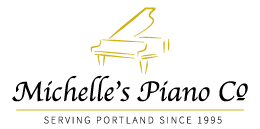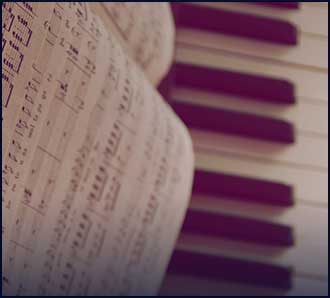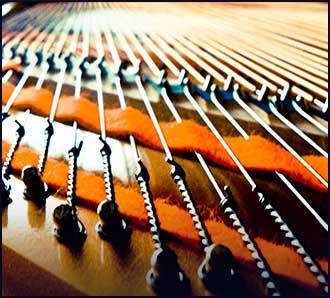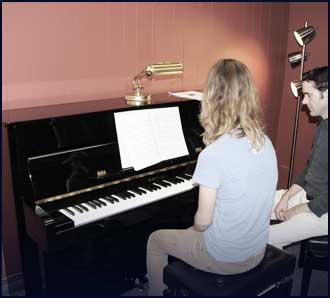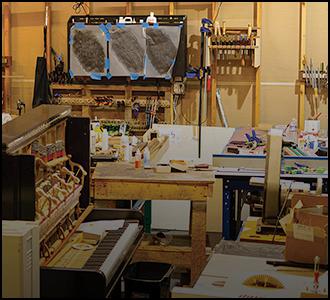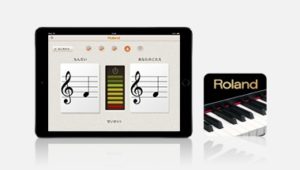
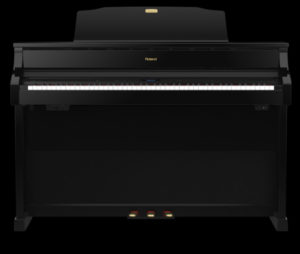
Robert Cutiietta, now Dean of Thornton School of Music at USC, wrote an insightful book called, “Raising Musical Kids.” The approach of the book was written from the vantage point of an educator of music teachers, parent, band director, and more importantly musician! The overarching theme of the book was music improves the culture of a community and we want our children to be playing music as adults in their 90’s. Digital pianos, are becoming a great option for families looking to engage their children and even themselves in learning the piano.
With technology and more importantly learning the piano, technology increasingly plays a larger role! Roland’s family of instruments have the capability to be blue-tooth enabled thus linking it with the Apple device whether tablet or phone. The free Roland, Piano Partner App, allows the beginner to learn notes either visually or aurally. A flash card or corresponding note is displayed or played for the student and then they find the corresponding note. They also can play a wide range of music and the Hanon/Czerny exercises along with both notation and track with. This capability also allows the student to change the tempo. This instrument increases the student’s ability to become more engaged with the music as well, reinforce practice time with lesson time, and connect them to the music for the long term.
The digital piano has come a long way since the early days of the class piano. Touch and tone have been improved vastly. Digital pianos are modeled extensively after the concert grands. Roland uses digital recording of the New York Steinway Model D to capture the beauty and touch of the prestigious concert grands. Roland is the only manufacturer where one can put “dip weight” on their keys and the keys slowly drop similar as to the action of a grand piano. Why is this important? It provides a more responsive touch allowing for more expressiveness for the pianist. The tone of digital pianos have drastically improved. Most music professionals in hearing the recording of digital vs. acoustic are unable to differentiate the difference.
One can make the correlation of that to digital photography. When the first digital cameras came out they were grainy at best but we were excited because we could take multiple pictures, silly picture, and perhaps photos we didn’t want anyone to see and we were not wasting paper in the process. Today’s 22 mega pixel camera are as clear, detailed and life like as their SLR counterparts. So, is the sound of digital pianos.
Digital pianos get their sound through sampling. This is simply recording acoustic instruments taking the recording converting to algorithms plotting these points along a curve that resemble the natural frequency of the sound wave of an acoustic piano.
Digital pianos provide more than just piano sounds. Digital pianos span the musical genre from the clavichord to electric piano sounds in pop soundtracks of today. When both young and older students alike can play music from rag time, well tempered clavichord, or with an accompanying rhythm this ability brings a greater sense of fun and enjoyment in the pursuit of learning music. Music is all around us and we simply must find the musical outlet for all of these budding musicians. So, come in and try for yourself this exciting, captivating and highly engaging instruments to tap the inner musician waiting to express yourself!
